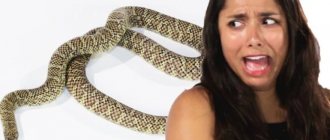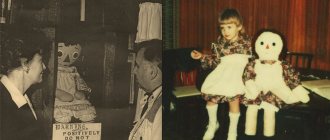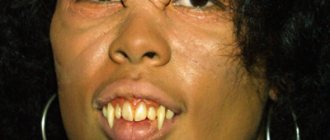0 1637 June 28, 2021 at 6:11 pm Author of the publication: Sofia Ulantikova
Loud sounds harm the psyche of any person. And if he is also particularly sensitive to them, constant background noise or sharp screams create stress. Stress changes mood, behavior and perception.
Let's figure out what happens in the head of a sound-sensitive person in a bad sound atmosphere. If such a person understands how and why noise affects him, he will be able to protect himself from noise, not by avoiding the external problem, but by eliminating the internal one.
Symptoms of noise hypersensitivity
With neurosis, increased sensitivity to loud sounds can have different manifestations. Typical symptoms:
- mild irritation;
- trembling, which can be fleeting (it shuddered and went away), or can be long-lasting and exhausting;
- headache;
- dizziness;
- lightheadedness, often accompanied by nausea and even vomiting;
- semi-fainting states.
There are other possible ailments that are associated with a person’s individual “preferences” and fears. So someone may have a stomach ache, while others may feel their temperature rising.
The intensity of the symptom depends on the severity of the anxiety.
For the same person, at different periods of life and in different circumstances, the symptoms of loud intolerance are different.
In some days, months and years of life, truly loud sounds can remain practically unnoticed, and in others, even a slight noise can lead to the development of a panic attack.
Hypersensitivity to sounds -
The body's normal reaction to anxiety. But this reaction often causes a person to panic.
Treatment
Conservative therapy
Therapeutic tactics for hyperacusis are determined taking into account the cause of the pathology:
- Labyrinth defeats.
As part of long-term therapy for Meniere's disease, agents to stimulate microcirculation, venotonics, diuretics, and neuroprotectors are used. Paroxysms are stopped with the help of neuroleptics, antihistamines, vasodilators and diuretics. Training of the vestibular apparatus is recommended. For perilymphatic fistulas, antispasmodics, antiplatelet agents, and multivitamins are used. - Traumatic injuries.
Chronic acoustic trauma is considered an indication for a change of profession. Antihypoxants, nootropics, and B vitamins are useful. Darsonvalization and hyperbaric oxygenation are effective. Postconcussion syndrome requires vegetative stabilizers, antispasmodics, nootropics, neurometabolites, and psychological correction. - Neuritis.
In case of Bell syndrome against the background of other pathologies, the underlying disease is treated. At the initial stage, medications with vasodilating and anti-edematous effects, glucocorticoids, are prescribed. Subsequently, physiotherapy, exercise therapy, and massage are used. Patients with ganglionitis in the acute period are prescribed antiviral drugs, immunotherapy, and subsequently anticonvulsants, anticholinesterase and sedative drugs, drugs to improve microcirculation, and reflexology. - Migraine.
Relief of paroxysms is carried out using combined analgesics, codeine-containing agents. If symptoms persist for a long time, triptans are prescribed. Migraine status is an indication for the administration of glucocorticoids and ergot drugs, antiemetic and psychotropic pharmaceuticals, and intraosseous and periosteal blockades. - Meningitis.
Hospitalization is underway. For purulent processes, antibiotics and sulfonamides are required. For tuberculous meningitis, continuous administration of two or three antibacterial agents is necessary. For viral meningitis, restorative and symptomatic medications are used; for severe cases, diuretics and corticosteroids are added to the regimen. - Multiple sclerosis.
During exacerbations, pulse therapy with glucocorticoids is performed, and plasmapheresis may be used. To stabilize the condition and prevent progression, immunomodulators and immunosuppressants are recommended. Symptoms are eliminated with the help of stimulants, antidepressants, barbiturates, beta-blockers, and anticonvulsants.
Surgery
Patients with hyperacusis undergo the following surgical interventions:
- Meniere's disease:
decompression operations (drainage of the endolymphatic sac, fenestration of the semicircular canal, perforation of the base of the stapes), laser destruction of the labyrinth, cervical sympathectomy. - Perilymphatic fistula:
tympanotomy, atticoanthromastoidotomy. - Otosclerosis:
stapedoplasty, fenestration of the labyrinth, mobilization of the stapes. - Bell's palsy:
suturing of the nerve or neurolysis in case of traumatic injury, plastic surgery of the nerve trunk using branches of the healthy facial nerve from the opposite side.
What sounds trigger an attack?
Any noise can become a trigger for a person to increase anxiety and cause panic.
- For some patients, especially those who suffer from post-traumatic stress disorder, attack triggers are sounds associated with a traumatic event experienced in the past.
And trauma in this case can be not only a truly difficult experience associated with a real danger to life, but also any event that was perceived acutely by a person.
For example, when the first panic arose, a dog was barking somewhere. And now dog barking is a panic attack trigger.
- Other people have heightened sensitivity to any sounds. Usually loud.
Sometimes a person is in such an acutely anxious state that he is forced to remain in complete silence, because virtually any sounds lead to a worsening of the condition.
Normal stress response as the main cause of noise hypersensitivity
When the human body prepares for “fight and flight”,
namely, this is what happens with anxiety, the susceptibility of his senses is heightened.
This is how evolution intended it to be. Indeed, in nature, for survival, it is important to see and hear the approaching enemy as early as possible.
This is why, when anxious and stressed, many people complain that they are bothered by bright lights that may not be that bright, or loud noises that aren't that loud.
Increased sensitivity is a normal physiological reaction of a person when he expects to encounter danger. Another thing is that these days there is usually no real danger: no one is trying to eat us.
We worry about some of our thoughts that we don’t even notice. Therefore, we do not realize how actively our body prepares for “fight and flight.” And if we don’t realize it, then we think that we have some kind of disease, some specific intolerance to loud sounds. Although in fact this is a common healthy mood when the ears should be on top of the head.
Focus on what's important
People who are sensitive to sounds may become lost in their own thoughts. They are often gnawed by global questions to which it is impossible to find a clear answer. They involuntarily think about the essence of human existence and do not understand what this essence is. These people spend their intellectual energy thinking about their internal problems. And their problems seem more and more difficult and unbearable to them.
They are trying to formulate the meaning of their personal existence. But such reflections baffle them. Sometimes they themselves understand that their thoughts are unproductive. But what else is there to think about? Many of those who are sensitive to sounds do not find use for their abilities. They do not realize their psychological need to comprehend the meaning of existence, to make discoveries, even at the level of their personal, individual life. Then they, already lost, are drawn into the negative by the slightest sharp sound and noise slightly above average.
There is a way to counteract the psychological harm of annoying sounds. If a sound-sensitive person receives a dose of discovery and deep meaning, noise does not harm him. He can safely ride in crowded transport and not plug his ears with headphones. To receive such a dose of psychological fulfillment, you need to be able to concentrate your consciousness and find an application for your intellectual abilities.
It's easier to concentrate on what you like to think about. You enjoy both the object to which you direct the focus of attention and the very process of the work of consciousness. That is, in order to distract yourself from sounds, you need to choose an interesting intellectual subject, become truly interested, and immerse yourself in the problem. When you come to conclusions and feel that an idea is about to open, no sounds can break your concentration.
But how can you load your brain from scratch, out of habit, when it’s so labor-intensive?
Neurasthenia is the second cause of noise intolerance
There are many reasons for chronic fatigue (neurasthenia):
- increased stress at work;
- regular suppression of emotions;
- fear of making an important decision, etc.
All this can lead to a state of neurasthenia even for a person with a stable psyche.
What can we say about those who already suffer from neurosis, for example, “suffering from VSD.” These people are constantly in a state of nervousness, constantly waiting for an attack (external or internal, for example, a heart attack), and thus put themselves in a state of chronic fatigue.
Academician Pavlov divided neurasthenia into several phases.
And he said that the first two of them are characterized by an extraordinary acute reaction to standard, often not strong, stimuli, for example, to sounds. In this state, what is often important for a person is not the sound itself, but the interruption of silence.
Sources
- Chutko L. S., Baranova I. A. Neurasthenia. 2009. Medical Council;
- Veltishchev Dmitry Yuryevich Neurasthenia: history and modernity. 2011. Neurology, neuropsychiatry, psychosomatics;
- Bozhko S. A., Beketov Yu. A. Complex non-drug therapy of neurasthenia. 2011. Bulletin of new medical technologies. Electronic edition;
- Chutko Leonid Semenovich, Surushkina S. Yu., Nikishena I. S., Yakovenko E. A., Anisimova T. I. Neurasthenia: state of the problem and approaches to therapy. 2013. Neurology, neuropsychiatry, psychosomatics;
- N.I. Tursynov, M.A. Grigolashvili, S. Khan, E.D. Kim, S.W. Sopbekova, etc. Modern approaches to the treatment of neuroses in adults and children. 2021. Journal “Neurosurgery and Neurology of Kazakhstan”;
- Ivanova Irina Anatolyevna, Kuimova Natalya Nikolaevna, Kornienko Nadezhda Alekseevna, Tarasyuk Alexandra Aleksandrovna Complex Non-drug therapy of neurasthenia. 2021. Yaroslavl Pedagogical Bulletin.
The formation of a conditioned reflex leads to a pathological reaction to noise
The experiments of Academician Pavlov, who took a dog, rang a bell for it, and then gave it food, developing in the animal a salivation reflex at a certain sound, are well known to everyone since school.
But for some reason people do not apply this knowledge to themselves. And they are looking for more complex explanations of simple phenomena. But an acute reaction to undefined sounds can often represent the most common conditioned reflex, exactly the same as Pavlov’s dog had.
- A person heard a sound, got scared (the fear could have nothing to do with the sound itself) and developed a conditioned reflex to be afraid of this sound.
- Then this primitive animal conditioned reflex becomes overgrown with a bunch of now human explanations and fears. As a result, it becomes not only stronger, but also wider: unpleasant sensations arise in response to more and more sounds.
How to get rid of intolerance to loud sounds
First, you need to identify the underlying cause of hypersensitivity to sounds.
- If this is neurasthenia, then it needs to be treated. This is a separate task for which a person needs rest. And not performing various exercises, including those described below.
- If intolerance is an anxious-phobic reaction to normal physiological manifestations of the body’s functioning, as is the case in patients with VSD, then the neurotic disorder itself must be treated. However, exposure therapy exercises are also indicated.
- If a conditioned reflex is formed after a traumatic event, then the solution is exposure therapy.
Diagnostics
If labyrinth diseases are suspected, diagnostic measures are carried out by an otolaryngologist and vestibulologist. Patients with neuritis, meningitis and other neurological pathologies are examined by a neurologist. For mental disorders, consultation with a psychiatrist or psychotherapist is indicated. During the survey, the time of onset of hyperacusis, its connection with external factors, and other symptoms are determined.
In case of migraine, establishing the nature of cephalgia is of great importance. When collecting anamnesis, the presence of chronic otitis media, head injury, and diseases accompanied by increased intracranial pressure is clarified. When diagnosing acoustic injuries, a life history reveals episodic or constant exposure to high noise conditions. To clarify the diagnosis, procedures such as:
- Otoscopy and microotoscopy.
Changes are not typical for Meniere's disease. Acute acoustic injuries are accompanied by rupture, chronic ones – by retraction of the eardrum. With perilymphatic fistulas, swelling and hyperemia of the membrane are noted, and the light reflex is weakened. With otosclerosis, Hombgren's triad is determined, a local decrease in skin sensitivity, and sometimes atrophy or hypertrophy of the membrane. - Neurological examination.
In post-concussion trauma, there are no neurological disorders, but there is autonomic dysfunction. With neuritis, muscle weakness and sensitivity disturbances in half of the face are detected. With meningitis, meningeal symptoms are detected, with migraine stroke and multiple sclerosis - a characteristic neurological deficit. - Research of the auditory analyzer.
Recommended for pathologies of the labyrinth and acoustic injuries. The list of techniques may include tuning fork testing, speech and tone threshold audiometry, otoacoustic emission, electrocochleography, and acoustic impedance measurement. The scope of the examination is determined depending on the nature of the violation. - Research of the vestibular apparatus.
Necessary when the labyrinth is involved. Vestibulometry, computer stabilography, and indirect otolitometry are prescribed. Hypo- or hyperreflexia may be characteristic of various diseases. In Meniere's disease, these conditions replace each other depending on the time of examination (paroxysm or interictal period). - Other hardware techniques.
As part of the examination, X-rays of the temporal bone, CT and MRI of the brain may be performed. A number of patients are shown electroencephalography and echoencephalography, extra- and transcranial Dopplerography, and duplex scanning. For neurological pathologies, electromyography, electroneurography, and evoked potential testing are prescribed. - Spinal tap.
It is the main method for diagnosing meningitis and allows one to verify or refute this diagnosis. The liquid flows out under pressure, in serous processes it is transparent, in purulent processes it is cloudy. Based on the results of the analysis, pleocytosis, an increase in protein levels, and sometimes a decrease in the amount of glucose are determined. - Lab tests.
In case of ganglionitis of the geniculate ganglion, the herpes zoster virus is detected by ELISA or PCR, and an immunogram is prescribed to identify possible secondary immunodeficiency. In amaurotic idiocy, a sharp decrease in the level of hescominidase A is detected in a biochemical blood test; microscopy of neurons reveals signs of cell degeneration.
In the diagnosis of migraine, a decisive role is played by the characteristic clinical picture and the absence of changes according to additional studies. Patients with post-concussion syndrome, PTSD and depression are advised to undergo psychological testing to assess personality characteristics, emotional-volitional and cognitive spheres, and identify characteristic signs of mental disorders.
Otoscopy
What is the essence of noise exposure therapy?
The purpose of the method is
a break in the conditioned reflex to any frightening stimulus, in this case noise. To do this, it is necessary to remove reinforcements. The bell rings, but no food is given. Gradually, the dog stops salivating in response to the call.
In cases of hypersensitivity to noise, the reflex is reinforced by:
- a startle that shoots out when a sound occurs;
- avoiding “noise attack”.
If you know that certain sounds can make you feel worse and even have a real panic attack and you avoid these sounds in every possible way, you are constantly strengthening your conditioned reflex.
Exposure therapy involves presenting a person with a frightening stimulus. And in maintaining this stimulus.
Stepwise desensitization should work,
in which the intensity of the presented stimulus and its duration are increased gradually. At first, they do this only in those conditions that the person himself assesses as completely safe for himself, for example, he is at home with loved ones.
Gradually everyone is moving to real – “combat” – conditions. To do this, they go outside, move away from home, and listen to a frightening sound in the environment in which it is perceived as most threatening.
How to do exposure therapy at home
Stage one: imaginary exposure
In an environment that feels completely safe, sit in a comfortable position and relax. To relax, use:
- muscle relaxation techniques;
- breathing exercises;
- meditate.
It doesn't matter how you relax, the main thing is to achieve relaxation.
Think about the sound that frightens you and your pathological reaction to it. Do it in all its glory:
- imagine in detail what could happen to you - panic, heart attack, dizziness?
Visualize your fears vividly.
Important!
If you bring yourself to panic, good. Just get over it. You are safe. You are not in danger. There is not even a frightening sound; it only exists in your head. When panic occurs, don't stop thinking about the sound. On the contrary, stay with him until the panic subsides.
Repeat the exercise every day until fantasies about encountering a hated sound no longer frighten you.
Stage two: real exposure in a safe environment
- Write down the noise that scares you.
- In a safe environment, sit in a comfortable position and relax. Listen to the recording of the scary sound.
- Gradually increase your listening time and volume.
It’s good if you panic while listening, and you can survive the attack without turning off the recording.
- Repeat the control until you stop completely noticing the sound you are listening to.
Clinical manifestations
The main symptoms of a vestibular migraine attack are dizziness of varying intensity and general weakness. In addition, patients note other clinical manifestations:
- pain in the neck and back of the head, which intensifies when turning the head,
- tinnitus, characterized by ringing in the ears,
- the appearance of a feeling of compression of the head and congestion in the ears,
- partial or complete visual impairment (possible flashing lights, loss of certain fields of vision, double vision, etc.).
The severity of clinical symptoms varies - from mild to severe. It should be noted that there is a vestibular migraine without headache. In this case, the characteristic migraine pain syndrome is absent. The patient complains of diffuse pain.
The symptoms of attacks differ from time to time. Duration - from a few seconds to several days. As a rule, a vestibular migraine attack completely passes within an hour. If you examine a patient without dizziness, it is difficult to identify neurological disorders.








